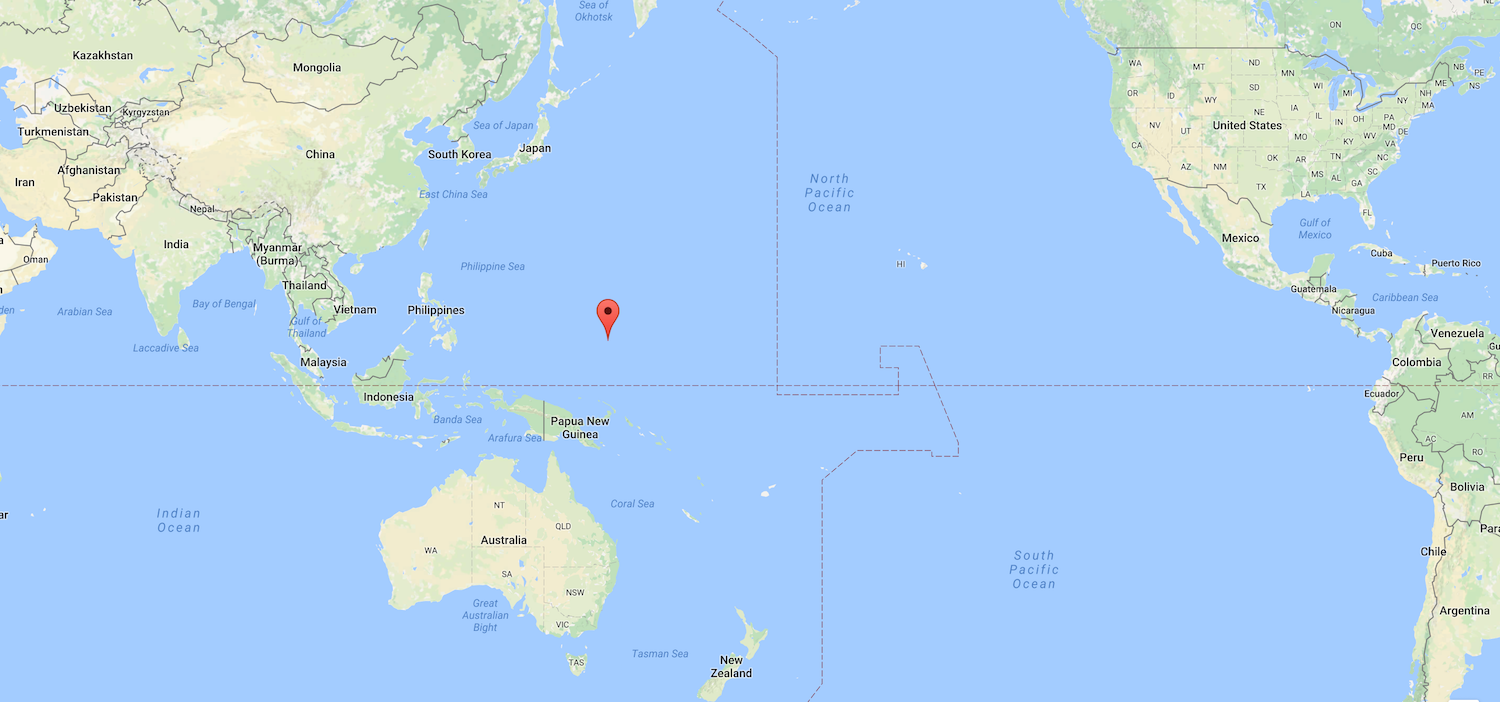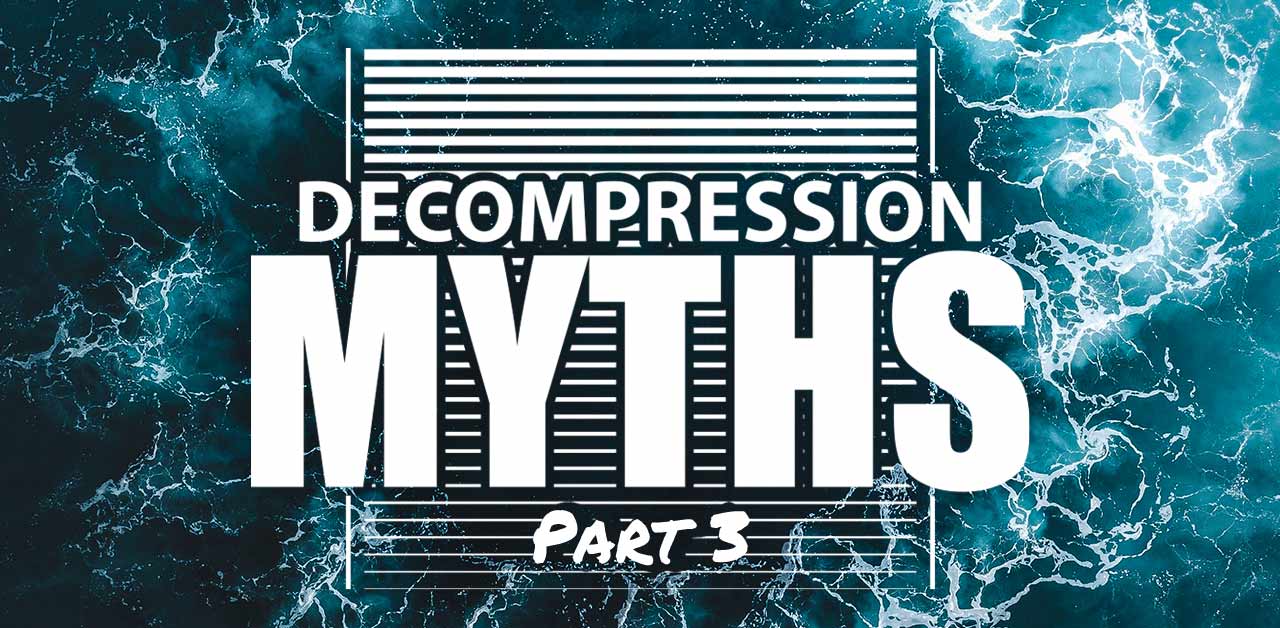Takeaways from Diving a Year in Truk Lagoon
by: Aron Arngrimsson
“We’re the middle children of history. No Purpose or place. We have no Great War. No Great Depression.” Chuck Palahniuk, Fight Club
As a millennial from Iceland, a country with no recent history of wars or violence, no military, and an unarmed police force, the effects of war have never been apparent for me. It can be all too easy for my generation to forget the awful lessons from war and what others have suffered for us to live in a world of peace today. After an unexpected phone call from a friend asking to run a high-end live-aboard operation in Micronesia, I decided to immerse myself in the footsteps of Jacques Cousteau and experience the biggest war museum in the world, first hand, for a year. The challenges running an advanced operation in one of the most remote diving destinations in the world cannot be understated, and nothing could prepare me for what I was to learn over the next 12 months. Having said that, here are a few takeaways from my experience in Truk Lagoon that I would like to share with you.
History is written by the winners.
It’s 05:14 am on the 17th of February, 1944. 35 planes fly off the Essex aircraft carrier as part of America’s Task Force 58. Loaded with 500lb and 1000lb armor piercing bombs, the first raid against the Pearl Harbor of the Pacific is about to begin. Half an hour before, eleven Hellcats already reached their target for an initial sweep at The Fourth Fleet anchorage, making the job of the bombers effortless. At 7am, a bomb with a delay fuse is dropped on the Nippo Maru, blowing up a large hole amidships, flooding the engine room and sinking it immediately. Operation Hailstone has begun. The naval task force, armed with over 500 aircraft, attacks the lagoon for 48 hours, decimating over 50 vessels and 250 aircraft. The biggest ghost fleet in the world is created.
For those of you that are not too familiar with this famous wreck destination, Truk Lagoon, or Chuuk Lagoon as it is formally called today, lies in the heart of the Federated States of Micronesia in the Central Pacific.
This lush atoll with 245 islands first encountered widespread human settlement in the 14th century and remained mostly undisturbed from outside influence until the Spanish came during the 19th century, where they unsuccessfully tried to assert power. The Germans subsequently took over in 1899, and this is where the phrase “Truk” Lagoon came about; the short story is that the Germans simply couldn’t pronounce Chuuk!
After the German defeat in WW1, Chuuk came under the Japanese Empire under a mandate from the League of Nations, which was a precursor to the UN. Immediately, the Japanese started planning and the largest Japanese naval base in the entire Pacific theater got built. It boasted five airstrips with hundreds of planes, seaplane bases, submarine repair shops, advanced infrastructure, and communications on land as well as massive anchorages for the navy. A significant portion of the Imperial Japanese Navy´s combined fleet had anchorage at Truk. Aircraft carriers, cruisers, destroyers, tankers, cargo ships, minesweepers, submarines, and numerous merchant vessels amongst others garrisoned 28,000 people. It became the key logistical and operational hub to support Japan´s defenses in the central and South Pacific.
It is often a misunderstood conception that the Americans liberated the people of Truk from a Japanese stronghold. This is not true. This was a mandate; meaning Japan had the authority to govern Micronesia. When the elders of Truk talk about the time the Japanese arrived, it was a time of stability before the war. When the war machine in the pacific escalated and the presence of soldiers and naval infrastructure increased, things changed. After Operation Hailstone, Truk ceased to become a threat to the allied forces, especially after the subsequent April attacks which completely obliterated the remaining forces that were left. Starvation ensued within the atoll until the Japanese surrendered in 1945 where Truk then came under American control until 1986. This arrangement with the United States was then expanded under the Compact of Free Association (COFA), which made the four states of Chuuk, Koshrae, Pohnpei, and Yap into the Federated States of Micronesia. This means that they are an independent nation today, but still receive foreign aid from the US, Japan, and China amongst others. Today, FSM remains heavily influenced by the US and could at any point of time be used again as an important American military base in the pacific, just like the Japanese did in the past. For the Chuukese, it seems like a full circle that repeats itself with different faces. Some argue they had it better under the Japanese than they do today, and when comparing current infrastructure and commerce, it’s not hard to see their point.
Truk Lagoon initially was a target for the first atomic bomb
It was not until 1941, when the Japanese attacked Pearl Harbor, that USA was dragged into World War 2. Thirsty for revenge, the Americans started a vast operation in the Pacific theater. U.S. Navy Planners believed at the time Truk Lagoon was their biggest challenge in the area and with The Manhattan Project already started, during a meeting on May 5th 1943, the Manhattan Engineering District’s Military Policy Committee decided:
“The point of use of the first bomb was discussed and the general view appeared to be that its best point of use would be on a Japanese fleet concentration in the Harbour of Truk. General Steyer suggested Tokyo but it was pointed out that the bomb should be used where, if it failed to go off, it would land in water of sufficient depth to prevent easy salvage. The Japanese were selected as they would not be so apt to secure knowledge from it as would the Germans.”
As history shows us today, they went back from this decision and chose to bomb Hiroshima and Nagasaki instead. After the war, the US still wanted to test their bomb on a navy fleet, so they assembled their own consisting of acquired enemy and old navy vessels in Bikini Atoll for the Able and Baker tests in Operation Crossroads.
For divers today Truk and Bikini have become the holy grail of wreck diving, but it is easy to ponder what Truk Lagoon would have looked like had if they had launched a nuclear attack on the Atoll.
Dig deeper into history and you never know what you will find.
In Truk Lagoon’s incredibly impressive variety of military hardware below the waves, I quickly learned that behind the less interesting objects, impressive stories often also appear.
While diving the Momokawa Maru, which is packed with beautiful ordnance and an engine room to di(v)e for, I usually took time to look at the water filter that lies by the bridge. One day I decided to do some research behind it and in short, portable Japanese carbon-activated water filters in WW2 were a brainchild of Surgeon General Shiro Ishii, a man whose name is usually associated with developing some horrible biological weapons for the Japanese in WW2.
Ishii is also responsible for Unit 731, a secret compound which conducted heinous human experiments on over 10,000 people “supplied” by the Japanese secret police. Just before the Japanese lost the war, Ishii ordered the plant destroyed and covered everything up, including killing his “logs” and their families, which were in his “sawmill” facility.
His main focus might have been on death, but he had a brief visit to defensive medicine to keep “expendables” alive by inventing an instrument that prevented waterborne disease. All of this surfaced from looking at a water filter. Truk is full of these Pandora’s boxes for you to explore.
The Balance of Deterioration
73 years after Operation Hailstone, nature has taken over the sunken ghost fleet for better and worse. The impression I get is that the vessels are in very different stages of deterioration, which can be pointed out towards gradual and catastrophic inflictions happening in this time. There are a large variety of factors that affect each wreck differently, from weather disasters and fire that weakens the hull during the vessel’s demise to surrounding dynamite fishing, just to mention a few.
A culprit involved that does not often get mentioned is a microorganism called rusticles. These complex bacteria protrude out from the hold walls like a tumor, getting all their energy from minerals and metals; they literally eat the wreck from inside out. It is fascinating to think about how this organism will still be munching away on our creations long after we are gone. Nature, as usual, always finds a way.
In terms of nature preserving the wrecks, after a protective layer of ferric hydroxide forms on the metal, marine organisms usually settle and grow on the wreck if left undisturbed. This slows down the process of disintegration unless the growth is too heavy for the weakened metal and it collapses.
Some wrecks seem to be corroding faster than others. San Francisco Maru, in the last 20 years, has completely lost the beams around its superstructure, illustrated here from a Dan Bailey book and a photo of me there dated January, 2017.
Fujikawa Maru’s superstructure has collapsed in on itself like a house of cards and very few funnels, due to their thin wall nature, are upright today. It is easy to imagine that Truk would lose its tourism industry once the wrecks are gone, and there are procedures in place to prevent things like pillaging, which include a $10,000 fine if caught, although that did not stop Cousteau from taking 16 tons in 1969. An idea often floated is that car wreckages (which there are plenty of in Truk) could be lowered and tethered to the wrecks in order to diverge the corrosion of the wrecks.
All The Clichés are True
I have been fortunate enough to spend extended periods in places that have facilitated me to develop my diving skills matching my interests. Egypt was my home for five years while delving in deep diving. Mexico was home for caves. For wrecks, Truk Lagoon seemed the obvious answer to polish skills as a wreck diver.
When researching Truk, you often hear cheesy lines like “Wreck Divers Paradise”, “Wreck Divers Wet Dream,” and so on. I had lowered my expectations way beyond what the Internet kept screaming out to me before I arrived. There cannot be much left on the wrecks after all this time. Surely they must be in a sorry state. I can tell you after a year all my expectations were superseded. Where in the world can you visit a place so rich with history? I have literally woken up every morning with a menu in front of me, thinking about if I should dive a seaplane, merchant vessel full of exciting cargo, submarine, oil tanker covered in beautiful marine life, or even a destroyer. The variety is just breathtaking and the engine rooms are nothing short of incredible.
It is also worth noting that Truk accommodates the recreational diver quite well, with over 70% of the wrecks on depths within recreational limits. For technical divers, the lagoon is the template for the reason to make rebreathers, with endless explorations at comfortable depths. I even managed to find a warrior mermaid on a 112-year old wreck.
Alas, the year is almost over, but I have already organized a CCR charter in March and December exploring the deeper and less visited wrecks of the lagoon. Next stop after that: Bikini’s Nuclear Ghost Fleet in September, 2018. Biggest takeaway from it all?
Wreck diving is way too addictive.
Join Aron Arngrimsson to ask questions and learn further intimate secrets from Truk Lagoon on his TDI seminar presentation at DEMA, Saturday the 4th 2017 at 1pm in room S320A. For those interested in visiting Truk, Aron is running 2 CCR charters to Truk Lagoon in March and December 2018, exploring the deeper and less visited wrecks of the lagoon. You can contact Aron on Facebook or info@thedirtydozen.org for more details.






















Hinterlasse einen Kommentar
An der Diskussion beteiligen?Hinterlasse uns deinen Kommentar!